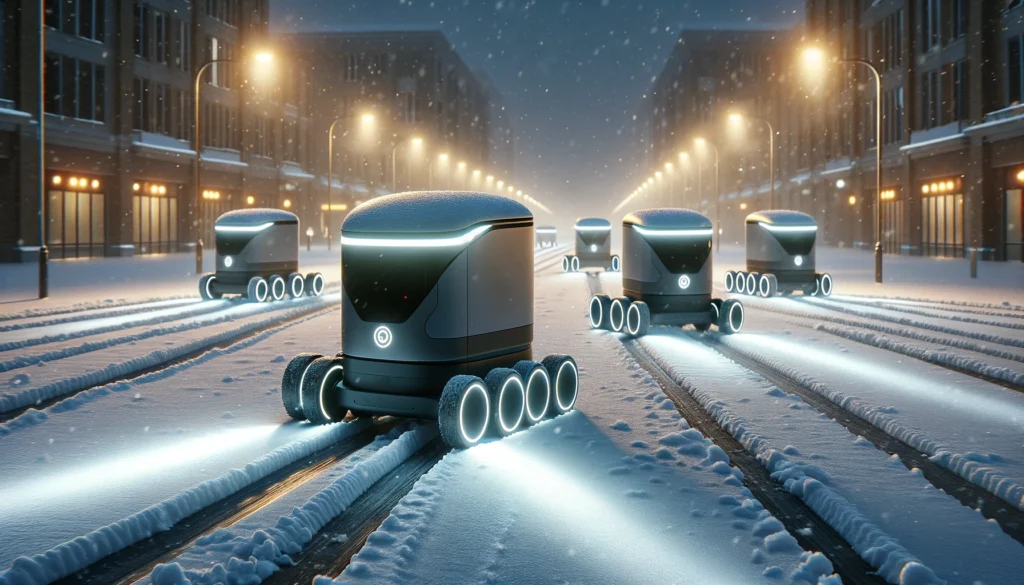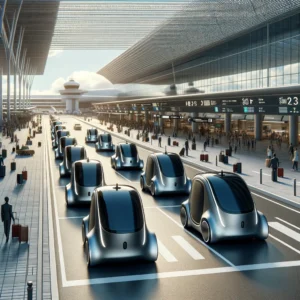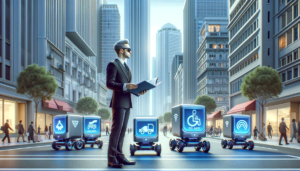
Starship Technologies Raise $90M while achieving 6 Million deliveries.
The Future of Delivery: Robotics vs. The Gig Economy
In the fast-paced world of delivery services, a seismic shift is underway. Companies are increasingly turning to technology to solve the logistical challenges of “last mile” delivery – the final step in the delivery process where goods reach their ultimate destination. Among the frontrunners in this revolution is Starship Technologies, a company that has recently raised an impressive $90 million in funding, bringing its total achievements to over 6 million deliveries worldwide. This development marks a significant milestone in the ongoing debate of robotic solutions versus human operators in the gig economy, especially when juxtaposed against giants like Uber.
Starship Technologies: Leading the Robotic Delivery Revolution
Founded with the vision of making delivery more efficient, eco-friendly, and cost-effective, Starship Technologies has been at the forefront of deploying autonomous delivery robots. These robots, designed to navigate sidewalks and pedestrian areas, represent a leap towards reducing the carbon footprint of delivery vehicles and addressing the inefficiencies in traditional delivery methods. The recent $90 million funding round is not just a financial boost but a strong vote of confidence in the viability of robotic delivery solutions. With 6 million deliveries under its belt, Starship Technologies is proving that robots can effectively meet the growing demand for delivery services, offering a glimpse into a future where technology and automation dominate the last mile.
Get the full break-down of Starship Technologies’ recent round of funding and success here.
The Gig Economy: Human Flexibility vs. Robotic Efficiency
On the other side of the spectrum, the gig economy, led by companies like Uber, relies heavily on human drivers to power its delivery services. The gig economy’s model is built on flexibility, offering workers the chance to earn on their own schedule while providing companies with a scalable workforce. This human-centric delivery approach has advantages, such as the ability to navigate complex urban environments and make decisions on the fly. However, it also comes with challenges, including variable labour costs, the environmental impact of gas-powered vehicles, and the complexities of managing a vast network of independent contractors. Let us not forget about the human factor either, a robotic delivery platform is much less likely to grab a few fries from your order than its human contemporaries.
Competing Models: Efficiency, Cost, and Experience
The competition between robotic delivery and the gig economy boils down to several key factors: efficiency, cost, and customer experience. Robotic delivery, as exemplified by Starship Technologies, offers the promise of consistent, low-cost delivery with minimal environmental impact. These autonomous robots can operate around the clock, potentially reducing delivery times and increasing efficiency. However, the technology is still in its early stages, and there are hurdles to overcome, such as regulatory approval and public acceptance.
Conversely, the gig economy model offers unmatched flexibility and scalability, leveraging human intelligence to tackle unpredictable challenges. This model benefits from the personal touch humans can provide, potentially enhancing the customer experience. However, it faces its own set of challenges, including the sustainability of labour costs and the environmental toll of relying on traditional vehicles.
As last-mile delivery grows and companies like Uber expand to include robotic and human solutions, how long before our city streets become crowded with pizza toting gig-workers and robots alike? That is a question the Urban Robotics Federation is attempting to answer. For more information on URF activities read up on our article or follow up directly at www.urbanroboticsfederation.com
The Path Forward: Coexistence or Convergence?
As we look to the future, it’s becoming clear that both robotic delivery and the gig economy have roles to play in shaping the landscape of last-mile delivery. The question is not so much about which model will prevail, but rather how they can coexist and complement each other. For instance, autonomous robots can handle routine, predictable deliveries, while human drivers manage more complex or sensitive tasks.
Furthermore, technological advancements and societal trends will continue to influence the evolution of delivery services. As autonomous technology matures and regulations adapt, we may see an increase in robotic delivery solutions. Similarly, as the gig economy evolves, we may witness a greater emphasis on sustainability and worker rights, shaping how human operators are integrated into the delivery ecosystem.
In conclusion, the competition between Starship Technologies and Uber in the realm of last-mile delivery highlights a broader debate about the future of work, technology, and service delivery. As robotic solutions and the gig economy continue to evolve, the ultimate winners will be the consumers who stand to benefit from more efficient, cost-effective, and sustainable delivery options. The journey towards this future is just beginning, and the road ahead promises to be both challenging and exciting.
Curious about our unique approach to robotics news?
Join the mailing list today and never miss an update.

